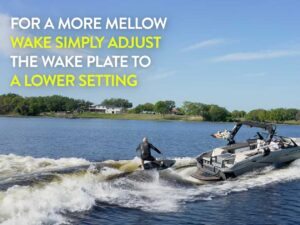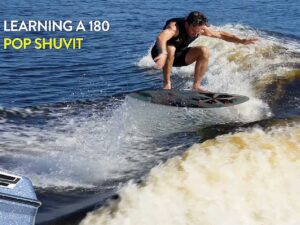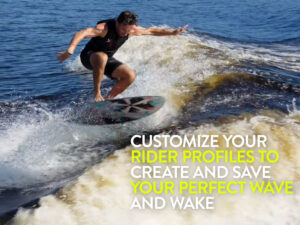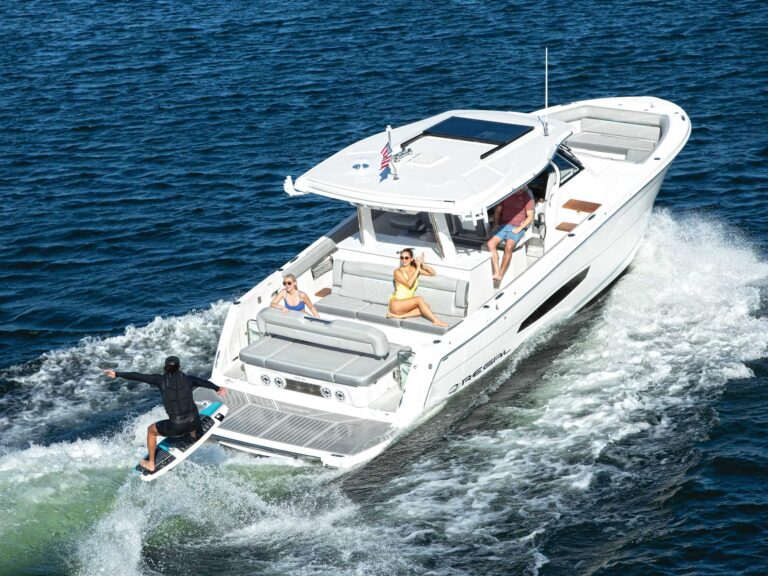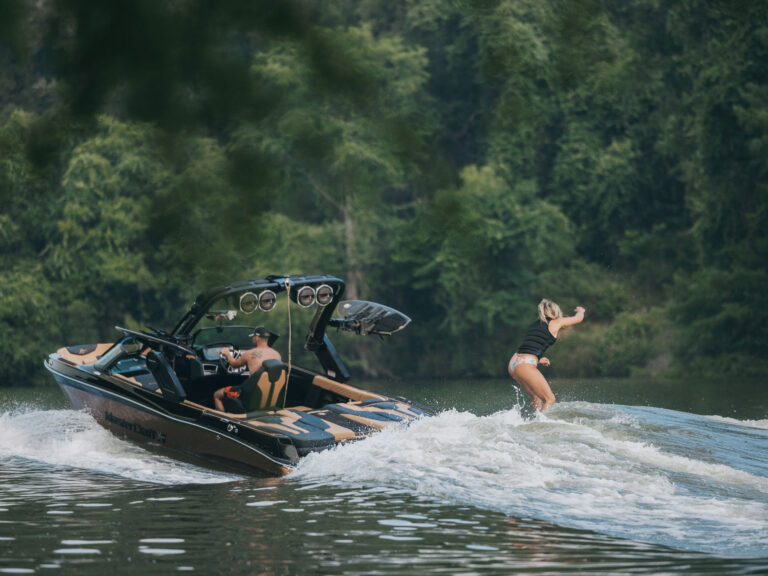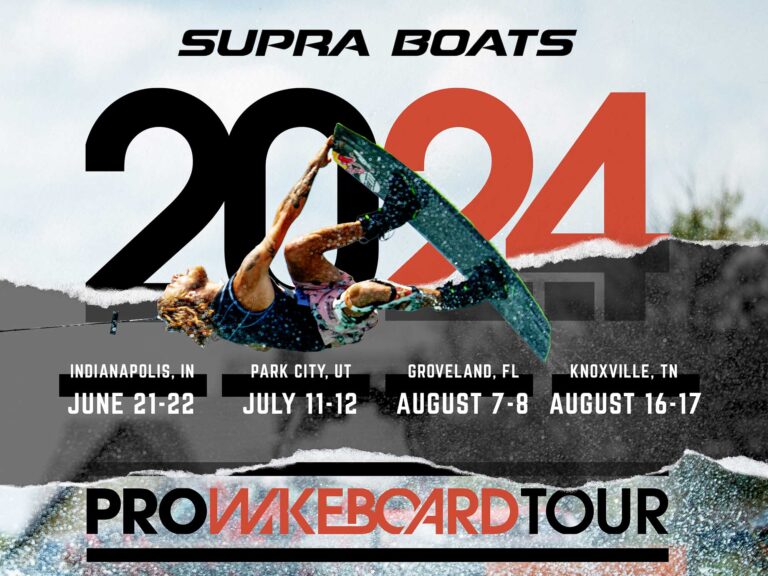The first thing you should learn to make you an incredible driver is to always tell your riders it’s your fault when they fall. The first thing this accomplishes is that you beat them to the punch because they’re going to blame you anyway. Second, it puts your riders in a better frame of mind when they think you’re the one who made them fall.
Anyway, the most important quality of a good driver is being aware of your waves. You want to find a path on your lake and stay in it, never letting waves (or rollers) travel down the same course. The best way to do this is to pick two spots on land at opposite ends of the lake, maybe a house or tree or clotheslines with bikinis, whatever.
The task of staying in your path is another feat. Don’t look forward to keep your line; instead, glance into your mirror at your turbulence and keep it in line with the object you picked. When you rider falls, slow down to idle speed before turning. When the boat is back in the path, accelerate back to your fallen rider. This will eliminate rollers.
Another major factor in driving is your speed. If you’re driving a tournament ski boat, you’ve probably added additional weight for a bigger wake and maybe an extended pylon for more lift. Well, these two things make the wake sweet for us riders, but they make it hell for our drivers. My best advice is try taking a peek at your tachometer when you’ve reached a speed that’s adequate for your rider. Your tachometer adjusts quicker than your speedometer, and it’s also a great back up for when your speedo picks up weeds. If you’re driving an I/O (inboard/outboard) or strictly an outboard, I’m sure you’ve noticed how difficult it is to hold that speed at 18 to 22 mph. Try putting weight in the front of the boat. This will help it plane off quicker. If you’re still having trouble, try transom wings. You can find them at your local dealers or one of the major water-ski accessories cataloges.
Speaking of weighting the boat, everyone’s doing it, but some aren’t doing it properly. Too much weight stacked in the back of the boat will 1) cause a soft and washy wake, and 2) make it more difficult for the boat to reach speed and plane off (another one of those things drivers will end up being blamed for). If you have a boatload of people and a weighting device, whether it be buckets of sand, concrete or water bags, try to keep the weight stacked evenly in the boat. If you have a lot of people, make sure some are riding in the bow. If you don’t have an open-bow boat, try stacking the weight alongside the engine compartment to make the weight more neutral. Ultimately, paying attention to this little detail will pay off when you get the crisp monster wake you’ve been looking for.
And finally, the last thing we’ll cover is double-ups. And I hope some of the people I’ve seen drive read this because if driven wrong, it completely screws up your second pass with all the rollers it makes. First of all, definition: Double-up (n.) A massive wall of water created by a boat crossing its own pre-made wake at anywhere from 45 to 90 degrees. This is usually requested at the end of one’s pass.
The trick is to make this without sending rollers down your path. And this is how you do it. Let’s assume your rider wants to do a heelside double-up. If he is left-foot-forward, the boat will need to turn to the right, and vice versa. But if you were to just start your turn to the right at the end of your pass and drive 90 degrees to your pre-made wake, then where would your rollers go? Ask your rider as he’s yelling “Idiot!” on his second pass. The trick to driving a correct double-up is this: Leave yourself enough room so that you can drive off 45 degrees to your boat path at the end of a run. If your rider is right-foot-forward and wants a regular heelside double-uup, you’ll turn right at the end of the pass and travel on a 45-degree angle from your boat path on a straight line for about 200 feet. Then, make your turn to the left, but make it an arching turn, allowing yourself enough room to set your consistent speed again. You don’t want to be increasing in speed as you drive through your wakes.
You’ll notice in using this method that you won’t send any rollers into your sacred course, and everyone will love you for it. As far as the angle to drive through the double-up – that’s pure preference. I think it’s an easier learning process to hit double-ups if the driver goes through at 45 degrees and then progress to 90 as you get better.
With all this said, still, the best advice I can give is: Communicate. Talk to your rider; ask him or her what he or she likes. And remember: It’s the most thankless job you’ll encounter and you’re never right, but without you wakeboarding would be a boring swimming event.
